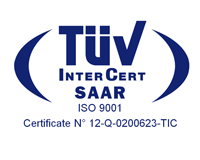
Positioning with high accuracy, integrity and resiliency is a mandatory requirement for autonomous and automatic vehicles with GNSS a key technology to guarantee the high levels of safety for the ERTMS train control system and the CCAM for the connected and autonomous cars. So far investments on a par between users and satellite stakeholders are producing innovations for contributing to a safer and sustainable mobility.
Augmentation networks to correct GNSS signals received by the vehicles are an integral part of the GNSS-based solutions and today only EGNOS is providing a regulated and standard Safety of Life service for the airplanes. Because the rail and automotive industries will become important utilisators of the GNSS, a priority is to reuse efficiently EGNOS and the new Galileo infrastructures. These networks can be complemented with ad-hoc systems tailored for the rail and automotive applications since the use cases, operational environment and liabilities differ from the aviation case upon which EGNOS has been developed and certified.
Furthermore, the GNSS augmentation services are expected to be available world-wide as for the aviation since the rail and automotive markets are global and international standard are necessary to guarantee interoperability and independency of the supply chain.
Italy is a front runner for the adoption of GNSS positioning for the rail ecosystem with Hitachi Rail (former Ansaldo STS) having put into operation a Train Control system based on ERTMS with GNSS positioning. Yet, RFI with the contribution of ESA and ASI has cumulated more than 10 years of experience of satellite technologies for use with the ERTMS in the conviction that GNSS technologies will improve the sustainability of the ERTMS, the regularity of the rail operations and the transport capacity.
The new contract awarded by the Italian Space Agency (ASI) to the JV between Leonardo (coordinator), RFI, Sogei and Radiolabs is a premiere allowing it to develop a world’s first multi-modal GNSS augmentation demonstrator for both the rail and automotive applications with a 2-tiers architecture. This approach – introduced by Radiolabs within the ERSAT EAV, RHINOS and HELMET H2020 EUSPA projects – is peculiar and cost-efficient to reuse EGNOS and Galileo together with local networks which can be deployed step-by-step as function of market needs and shared, being railways and roads almost close to each other’s.

The contract with ASI is strategic to develop and test a state of the art and resilient augmentation solution employing the recent advances on geo-localisation technologies together with the incoming RTCM SC-134 standard for high-Integrity precise positioning applications. This standard defines messages and data formats to include information for the implementation of integrity monitoring services for high accuracy applications for the rail, automotive and maritime applications exchanged between augmentation service providers and users. So far, users can calculate the integrity performance in real-time and implement their own Fault Detection and Exclusion algorithms, while guaranteeing interoperability and independency from supplier’s technological solutions.
A full-scale demonstrator for the ERTMS and Smart Road applications will be deployed in the Region Abruzzo (already hosting the P-CAR laboratory of Radiolabs) along the Roccasecca Avezzano line equipped with a 2-tier augmentation network and a locomotive provided by Ferrovie dello Stato Italiane group with the ERTMS and GNSS positioning on board. The automotive applications will be tested on a road, sharing the same augmentation network signals and utilising a Ducato vehicle equipped with GNSS positioning and a multi-bearer telecom system. Radiolabs is responsible to gather and process the experimental data and to estimating the integrity and accuracy performance of the train and the vehicle.
This new test bed has been properly chosen to ensure a synergy with the Innovation Pillar Flagship Project 6 (dedicated to regional rail applications) of the EU research and innovation programme Europe’s Rail Joint Undertaking in order to facilitate the standardisation of the solutions, relevant for interoperability, which will be tested.




